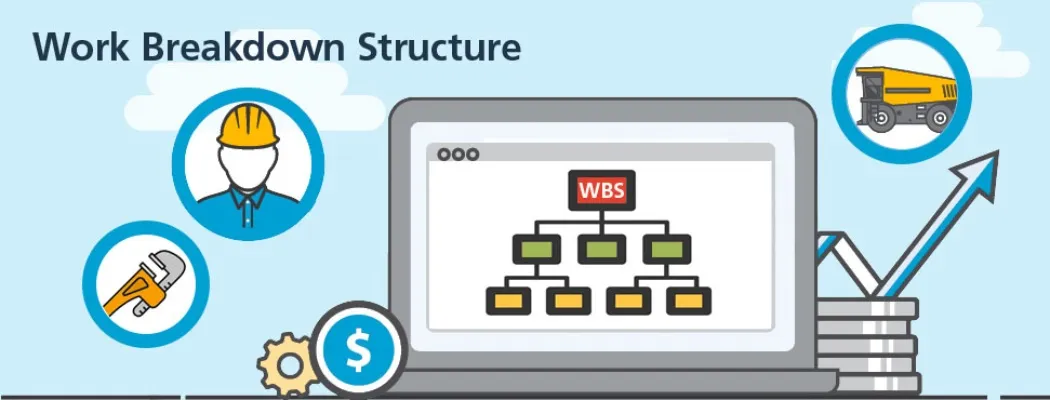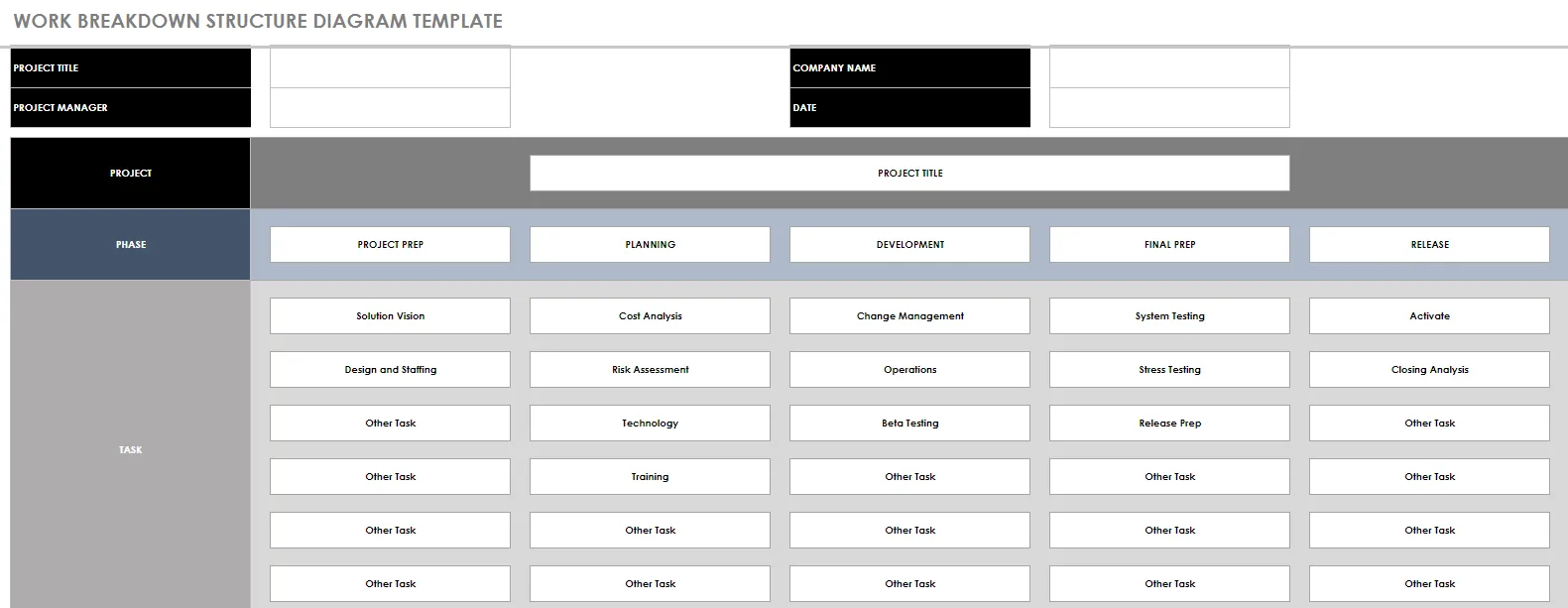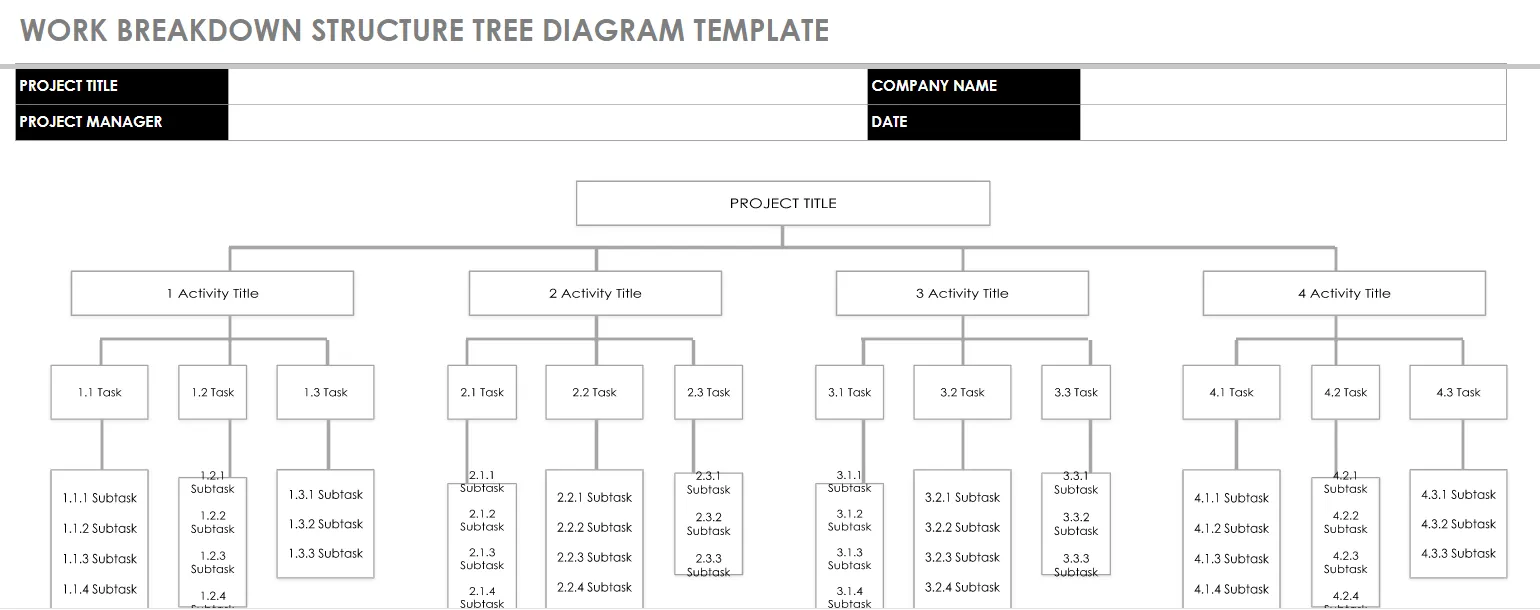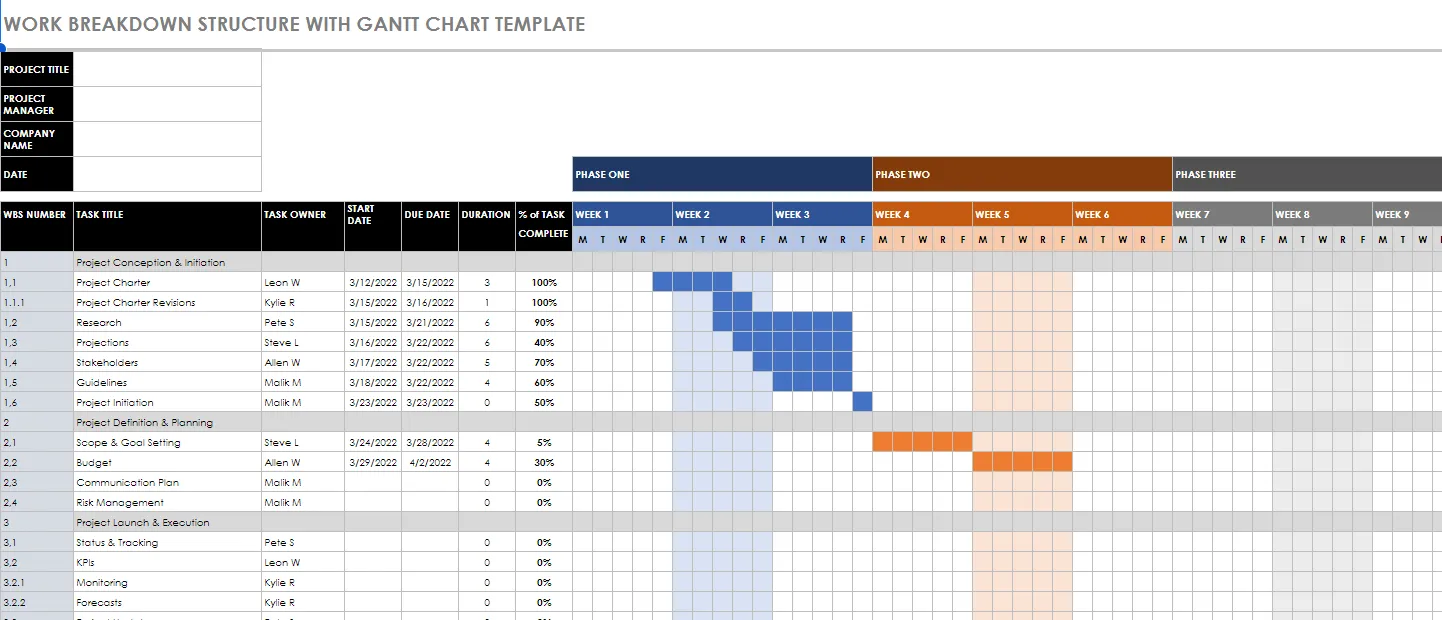1. What is WBS?
WBS stands for the English word "Work Breakdown Structure", which means "work breakdown structure". It is a simple project management tool that separates and structure the work in the project into smaller, more manageable and controllable parts. WBS is often used in project management to help define specific tasks and distribute work to project team members.
It can be said that WBS is an effective tool to make it easier for businesses to implement, deploy and monitor projects.
 What is Work Breakdown Structure?
What is Work Breakdown Structure?2. Example of WBS in project management
Here is an example of WBS in home construction project management:
- Define requirements and design
-
- 1.1 Collecting customer requirements
- 1.2 Design house plan drawings
- 1.3 Create detailed technical drawings
- Prepare the infrastructure
-
- 2.1 Carry out earthwork and pile foundation
- 2.2 Installation of drainage system
- 2.3 Construction of electricity and water supply systems
- Construction of house structure
-
- 3.1 Construction of walls, floors and roofs
- 3.2 Installation of doors and windows
- 3.3 Interior finishing
- Building comptele
-
- 4.1 Painting walls and ceilings
- 4.2 Installation of lights and air conditioning units
- 4.3 Inspection and maintenance of the whole building
Each part of the WBS represents a specific task and can be tracked and managed separately, helping to ensure project progress is delivered on time and efficiently.
>>>> Learn About: What is a PERT Diagram? How to draw detailed PERT network diagram
3. Purpose of Work Breakdown Structure
Work Breakdown Structure is widely applied by businesses to projects. The most common purpose of using a WBS diagram is to make the workheads transparent in a project. The following are some of the purposes of the WBS:
- Estimate the amount of power needed to do the job: With WBS, the tasks are divided clearly, specifically and transparently. Thanks to that, the administrator can know what work needs to be done and estimate the time it will take to complete.
- Create a reasonable work schedule: WBS helps businesses allocate the right work time and resources to complete the project. From there, businesses can manage project progress closely, creating a tight work schedule for company employees.
- Make the project team aware of the scope of work: WBS helps team members know the work that needs to be done on the project. From there, the deviations are limited to the lowest level.
 WBS is a useful tool for businesses
WBS is a useful tool for businesses4. Important ingredients in WBS
Following are the important components in WBS:
- Delivery Output: This is the output of the projects and work packages.
- Tasks: WBS helps the administrator to assign specific tasks to the project. These tasks will form part of the work package and scope of a project.
- Control Points: Control points play the role of assessing the current status of work packages. This is the point used to control project scope.
- Work Package: This is a group of tasks that are divided among members and departments in the project. The project manager can estimate the amount of work and time required for each project package to make them a fundamental component of the WBS.
- WBS dictionary: A list of WBS terms. The WBS dictionary is important because stakeholders can know WBS terms.
- WBS levels: This is the department that plays a role in determining the component hierarchy in WBS.
5. Steps to create an effective WBS
Following are the steps to create an effective project management WBS:
- Step 1: Determine the overall goal of the product to be delivered after the end of the project.
- Step 2: Identify WBS with tree or Outline structure.
- Step 3: Determine whether the WBS has a phased organization or a product delivery in the project.
- Step 4: Create a list of products. Thereby separating the most common products into smaller levels.
- Step 5: Set up a list of tasks to complete the sub-product and then break it down into smaller tasks.
- Step 6: Assign codes to elements in WBS.
- Step 7: Review the WBS process to ensure that there are enough factors such as: Project completion time, products all have codes and are all nouns. The work to be done in the project needs to be verbs.
6. WBS . Form
To optimize the process of building work boards (WBS) for the project, readers can refer to using the available WBS templates. Here are some WBS templates that you can apply right away:
Example WBS . diagram sample

WBS template according to tree chart

WBS chart according to Gantt . chart

7. 4 principles to keep in mind when building WBS
WBS really plays an important role in the project management process of the enterprise. Here are 4 principles that businesses need to keep in mind when building a WBS:
7.1 The 100% Rule
The 100% rule is the most important rule when building a WBS. This rule dictates that a WBS covers 100% of the work to be done on the project and is broken down into control points, deliverables, work packages, and tasks. These can be applied at all levels within the WBS.
7.2 Focus on results
This principle requires businesses to define elements in the WBS according to results rather than work methods. This will allow project members to choose the right tools and ways to do the work. Since then, the creativity of employees has also been enhanced.
7.3 Appropriate level of detail
The division structure in a project should only have 3 to 5 levels. Too many levels and details will cause the project time to be prolonged and inefficient. The “two weeks or 80 hours” principle is often applied in WBS. This principle states that if a task takes longer than 2 weeks or 80 hours, it should be further broken down
7.4 No duplicates
The tasks in a project should be clearly separated. These tasks should not overlap with each other as this will lower the performance of the work. This principle states that a task should appear only once in the WBS.
Hope this article will be useful and help your business to manage the project better. Follow the next articles on Vietnam Manpower 's website to know more advanced business management methods!












Replies to This Discussion